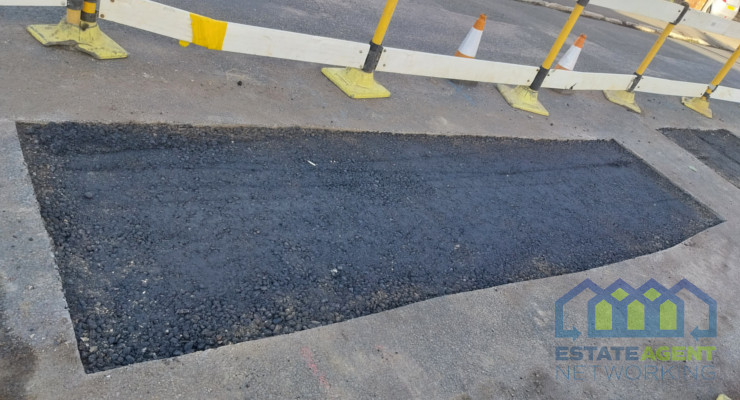Drain Relining: What Is It & Who’s Responsible For It?
One of the modern ways in which the repair or replacement of underground drainage pipe systems can be overcome is by providing a relining on the drains with not much excavation or replacing the pipes. The reasons for this popularity could be that it is less expensive, less time-consuming, and not as much of a disturbance, and thus enables the system to function again at its full capacity. A detailed description of the drain relining procedure follows, with all the covered advantages, points for responsibility and possible applications.
Drain Relining – What Is It?
In basic terms drain relining is a refurbishment process where the already damaged or deteriorated drainage pipes are restituted with a new, more resilient lining fitted inside the original one. In that regard, this does away with conventional excavation and replacement—something that could be very expensive, time-consuming, and probably destructive to the local environment—and offers a more efficient and environmentally-friendly solution.
Drain Relining – How It Works
Stage 1 – Assessment and Inspection
The procedure begins with an inspection of the drainage system. For this, however, inner pipe inspection is required, checking for cracks, fractures, and leaks or even root invasions, with the use of advanced camera equipment. This would help in determining the size of the damage and, at the same time, locating it to guide the relining process.
Stage 2 – Preparation
After that, preparation of the drain should be done for relining once the examination is done. Part of this includes cleaning up the pipe to eliminate every kind of pile, scale, and other foreign matter. This cleaning follows in order that the new lining adheres very well to the original pipe and further elongates its life.
Stage 3 – Installation of the Liner
Next would be the process of installing the liner itself. In the drain relining, the used liner is sometimes made with a flexible material like either polyester or fibreglass impregnated with some special resin. This liner shall, therefore, be inserted into the damaged pipe inside from an access point, such as from a manhole or cleanout. There are different methods of placing a liner in the pipe, such as inversion or winching, depending on the methodology employed by the relining contractor. Inflation of the liner using air pressure or water pressure then presses itself against the interior walls of the old pipe.
Stage 4 – Curing Process
After the liner is properly positioned, the resin impregnated within it undergoes a curing process. Curing can be achieved through several methods:
Heat Curing – Heat is applied to the liner, either through hot water or steam, to accelerate the curing process.
UV Curing – Ultraviolet light is used to cure the resin. UV light activates a catalyst in the resin, causing it to harden within minutes.
The curing process takes some hours, depending on the type of resin used and the cure method. Once cured, this adhesive becomes an extremely strong, seamless lining inside the existing pipe to seal any cracks or leaks and restore structural integrity to the drain.
Stage 5 – Final Inspection and Quality Assurance
The final check is done after curing to ensure that the relining process has been successful. A further video inspection may sometimes be carried out to verify that the new lining is securely in place and the pipe system in operation fully.
Drain Relining – The Benefits
Cost-Effectiveness
Some of the key benefits associated with drain relining include the cost, which is cheaper compared to the traditional excavation and replacement procedures. Through relining, major excavation can be avoided, together with a lot of restoration work on landscaping or infrastructures above the drain; this significantly cuts down on overall costs.
Least hassle
There is very minimal disruption to the surrounding area with drain relining. Unlike excavation, which may disrupt the traffic, company operations, or residential areas, relining can usually be done with minimal disruption to regular activities.
Time Efficiency
Relining projects typically take less time compared to others; after the lining and curing of the liner, the drain can quickly return to normal operation, which reduces downtime and annoyance.
Environmental Benefits
Again, by not requiring the excavation or replacement of pipes, drain relining decreases the construction impact on the environment. It also preserves existing infrastructure and reduces the amount of obsolete pipes laid aside for dumping, hence sustaining advocated sustainability in both urban and rural settings.
Long-term Durability
Drain relining creates a long-lasting, corrosion-resistant, root-infiltration-resistant lining that stands up to other common concerns with drainage systems. This durability elongates the life span of the drain and reduces future repairs and maintenance.
Dry Lining – Who’s Responsible?
Overall, responsibility for drain repairs lies with different agencies, depending on the location of the drain and the type of property it serves. The following is a general breakdown:
Private Property
The owners are responsible for the maintenance and repairs of drains which lie wholly within the boundaries of the property. This shall include all drain pipes interconnecting the property’s plumbing to the main sewer line or septic tank.
Public Infrastructure
Usually, municipalities are responsible for repairing and maintaining drainage infrastructure located either in public rights-of-way or under public roads, or otherwise serving multiple properties. This includes large sewer mains, stormwater drains, and other public utilities in this particular case.
Shared Responsibilities
In some cases, responsibilities for drain repairs may overlap or be shared.
Boundary Drains
Those serving multiple properties or crossing property boundaries may involve cooperation by adjacent property owners or local authorities for the determination of responsibility for maintenance and correction.
Easements
Some drainage systems may lie in easements or rights-of-way with specified maintenance responsibilities to the property owner or the local authorities, based on the terms used in conveying the easement.
Determining responsibility for drain repairs requires determining overlaps of location with type of property it serves, and which set of municipal restrictions affect it. Essentially, owners are responsible for repairs that take place within the bounds of their property; meanwhile, municipalities are responsible for public infrastructure. That means clear communication and adherence to local regulations and agreements are necessary to establish that drains be kept and repaired, without disruption, to permit adequate drainage to residential and commercial premises.
As shown drain relining is a versatile and practical approach for rebuilding broken drainage pipes while reducing costs, interruption, and environmental impact. Drain relining which uses innovative materials and procedures, provides a long-lasting solution that extends the lifespan of subterranean infrastructure in residential, commercial and municipal contexts. Drain relining is a key technique in modernising and maintaining drainage systems all over the world as infrastructure ages and environmental concerns grow more important.









